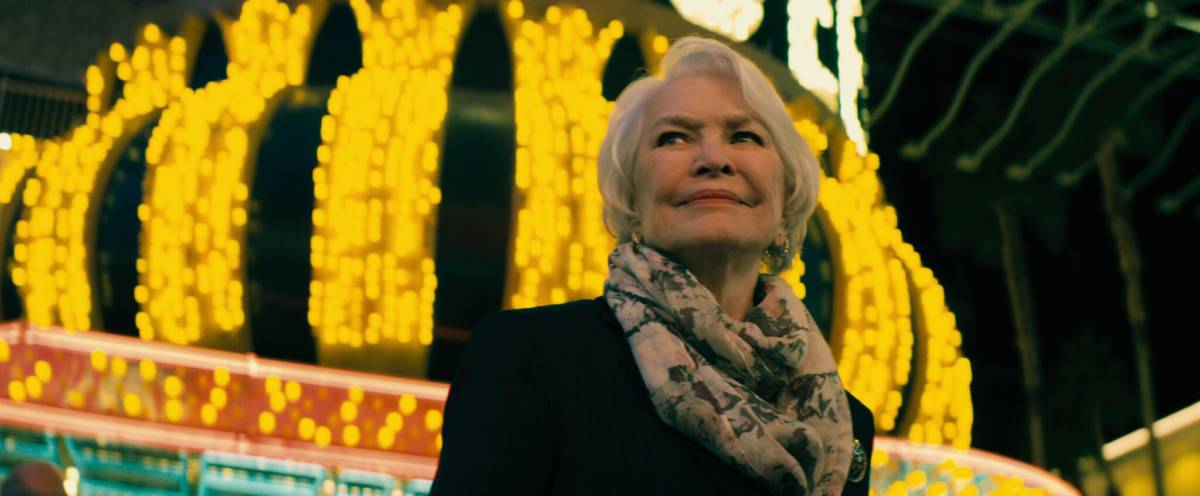Written by Alex Ross Perry and directed by Mark Pellington (who also has a story credit), Nostalgia is about the emotional, spiritual, and existential significance that we attach to objects.
The movie is a series of vignettes, divided roughly in half between people connected to two different families. There’s a scene toward the middle of the movie where one person from each family meets to conduct a business transaction. They have a touching, poignant conversation, then never see each other again. On the surface and plot-wise, this conversation is the only thing that connects the two families. But Nostalgia is a conceptual movie, not a traditional narrative. The movie isn’t worried about plot. The exploration of the underlying themes is what matters here.
A home insurance adjuster who, along with the photos he’s required to take as part of his job, always takes a picture for himself, unrelated to his investigation. A widow’s house burns down and she grabs a baseball from the burning building. The baseball belonged to her late husband, and though she isn’t sure why specifically, she knows that it was something that he treasured. A sports and pop-culture memorabilia shop owner, surrounded by objects once loved by others, tries to act as though he has no emotional connection to material things. Parents who lose a child whose possessions were mostly binary code, existing on computers and the web, can’t believe how little their child has left behind for them to remember her by.
These are the broad story outlines, but the movie is about moments, so a plot outline will only take us so far. More than anything, it’s the stunning performances that make this movie. Jon Hamm, Ellen Burtsyn, Bruce Dern, Catherine Keener, and Nick Offerman provide just a few of the standout performances. The realism in the performances comes in their restraint. The world of Nostalgia is one of vulnerability and melancholy. Even a hint of melodrama would ruin the verisimilitude.
The vignettes are often just a few people talking. Very rarely do we have more than a handful of people in a scene. Some of the most powerful moments come when it’s just a handful of people talking to each other, trying desperately to understand the other person.
The film is structured a bit like Richard Linklater’s Slacker in that one character enters the scene, talks to another character, and that second character leaves the scene to interact with another character. It’s not as rigidly structured as Slacker, but the pass-the-baton approach is quite similar. The flow of people represents, of course, the flow of ideas the interconnectedness of strangers, the unstoppable river of time.
In addition to exploring the significance of objects, the idea of a house as a kind of living thing with memories of its own is explored. A house changes as the people and objects inside it change, but it is always, somehow, the same house. The only way it can really die is to be destroyed completely. Torn down, maybe, or burned to the ground. After Ellen Burstyn’s character loses her house, she says mournfully to her daughter-in-law that she has no place anymore to play cards with her friends. “Cards are light,” the daughter-in-law says, “you can take them anywhere.” Naturally, she’s completely missing the point.
The idea that objects passed down for generations lose their sentimental power is explored beautifully here. Burstyn’s saving of her husband’s baseball from a burning building means that the object still has great significance to her, though the original importance of the thing, the specific set of values that made her husband hold the thing dear is lost, like a memory now buried in the unconscious. When she reluctantly sells it, the thing will still have significance as a collectible but it will have a wholly different emotional connection for the person who buys it.
The idea of time and memory is highlighted wonderfully in the many closeups of worn canals of wrinkles on the hands and faces of the characters. In fact, the opening shot is of a young waitress’s hands, just beginning to show the effects of time. I can’t recall a recently movie where human frailty was portrayed so elegantly.
This is a movie for anyone who’s ever found sentimental significance in objects. In short, it’s a film for anyone who’s ever loved.
Some of the coverage you find on Cultured Vultures contains affiliate links, which provide us with small commissions based on purchases made from visiting our site.

